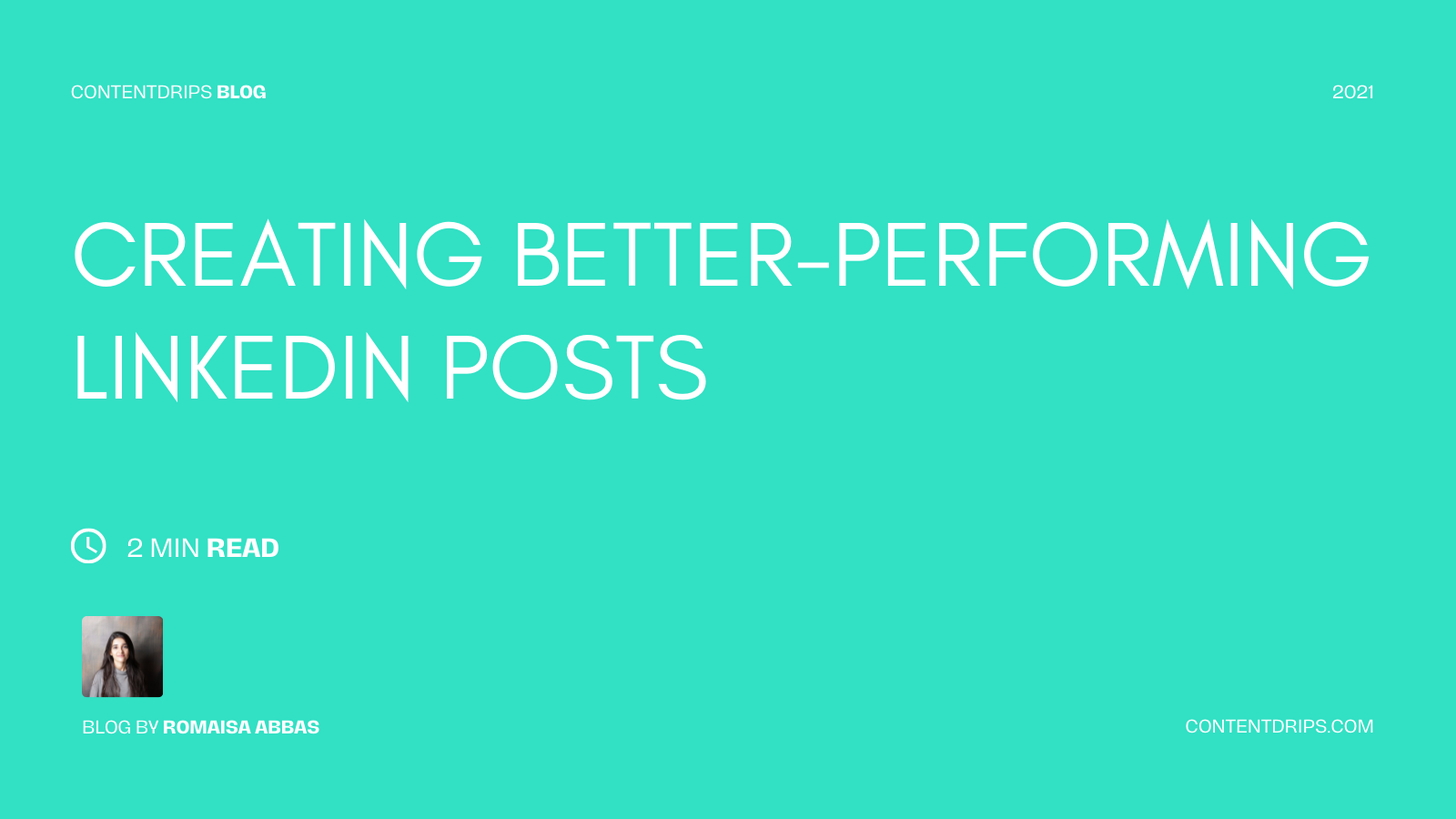Late in 2020, Mark Lerner shared his findings of how well LinkedIn carousel posts perform compared to text posts. According to his research and experimentation, a standard text post generated an engagement rate of about 6.67%. And in comparison, a carousel post generated an engagement rate of 24.42%.
Now, that is simply wow. A carousel post helps you gain triple times the average traction.
But. Only if you do it right.
And what exactly is the right here? Allow me to guide you through!
LinkedIn Carousel Post: Should You or Should You Not?
Before we get to improvising your carousel post for better engagement, let’s recheck if you even need to do a carousel post or not.
Here’s a quick guide to assist you out with that:
Who Should Opt for a Carousel?
If you are into media creation of any sort or consider yourself an expert in your field, then carousel posts will come in real handy for you.
To sketch a rough boundary, here’s a list of professional positions that must make use of a carousel post at least once in a while (on LinkedIn):
- Mentors
- Directors
- Managers
- Growth Experts
- Analysts
- Coaches
- Motivators
- Consultants
- Strategists
The list is, of course, not limited. Everyone is welcome to benefit from the engagement peaks that a carousel post brings to your profile.
However, for the roles mentioned above, I repeat;
The more you shy away from carousels, the more you keep yourself waiting for the recognition you deserve. The choice is yours!

When to Opt for a Carousel?
Now, here comes part b to your struggle: how do you know whether the theme of your post is fit for the carousel or not?
It’s simple. Ask yourself one basic question:
Can you make a bullet list of what you wish to communicate?
If yes, then it’s a green signal. Go ahead!
(If not, you should better write a text post instead. Here’s how you can do that perfectly.)
Ideally, carousel slides will help you generate the most engagement when sharing the following:
- Step-by-step guide
- Tips & Hacks
- Quotes & Sayings
- Lessons
- Project/Product Highlights
- Results
- Statistics
And everything else that you can count on your fingertips (And I mean that quite literally).
P.S. Drop in your ideas for LinkedIn carousel posts in the comments section below. We’d be glad to add more to our list here!
Designing Process: Focus on AIDA
When beginning with your carousel post, you need to focus on the AIDA technique from step one to last. From colors to content, each aspect of your carousel should be as per AIDA to have people stay and read.
How so, let me break it down for you.
Attention
Your first slide is your clickbait. This is where you bring in the stop, right there factor. And so, naturally, you’ve got to ensure it has three elements at least:
- A vibrant color scheme
- A catchy 3-5 words long title
- Your picture!
The color scheme you choose depends entirely on the subject of your post and your brand’s personality. You can even go with neutral, muted color combinations such as this free template here, which has driven killer results for many.
But it’s the second & third elements that lift it all. Your catchy title should be descriptive and compelling. You need to hit your reader’s pain point.
Lastly, adding your image to the first slide doubles the impact of your post. When it has you on it, it has authenticity. Use that wisely!
Interest
Next, you’ve to develop your audience’s interest over a span of slides. Refrain from pouring out all the important information in one slide. Instead, split one small targeted point into 3-4 sentences over 3-4 slides. Also, this is where you elaborate on your readers’ pain/interest points.
Desire
By desire, we refer to the readers’ desire for a solution. When addressing the desire of your audience, ensure you provide a solution for their problem. Or share details about your product or service that benefits them.
Action
In the last slide, ask your reader to do something. We call it CTA slide or Call-to-Action slide.
The mentioned action could be of benefit to you or your reader, depending on the mission and vision of your brand. However, mostly it aims to increase engagement. So, you could ask them to subscribe, like, or share if nothing else.

How many slides for a LinkedIn Carousel?
In the light of his experience, Chris Do suggests eight slides as an ideal count for any carousel post. And the magic formula is:
- Attention – 1 Slide: First
- Interest – 4 Slides: Second, Third, Fourth & Fifth
- Desire – 2 Slides: Sixth & Seventh
- Action – 1 Slide: Last
Chris encourages replacing the desire slides with details, wherein you provide your audience with the juiciest, or the most useful information possible.
Pick a Good Time to Publish
Once you have your carousel post ready to go live, pick a good time to publish. And by good, I refer to the time during which you find your network operating most actively.
In case you haven’t had the chance to observe such a time frame, I recommend posting anywhere between 9 am to 6 pm in your respective time zone.
Why? Well, that’s because LinkedIn is a place that concerns work. Most individuals, be it office workers or remote workers, associate and invest in work activities during this time frame only. Usually, 7 pm – 8 am is the time when people wish to kick back and relax; charge themselves for the next working day.
Track Your Results
If you’re thinking you can pack your bags and leave once you hit publish, well…that’s not quite true. (unless you only wanted to get one chore off your list.)
It’s time for your post’s performance analysis. You can assess the performance simply by observing the response you receive (i.e., the likes, interactions, comments, shares, etc.). Or you could use paid and unpaid analytic tools, such as those listed here.
Signing off, I wish you the very best with your LinkedIn carousel posts and content strategy. Do share your results and learnings with us here in the comments!


